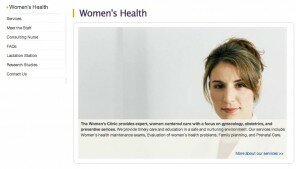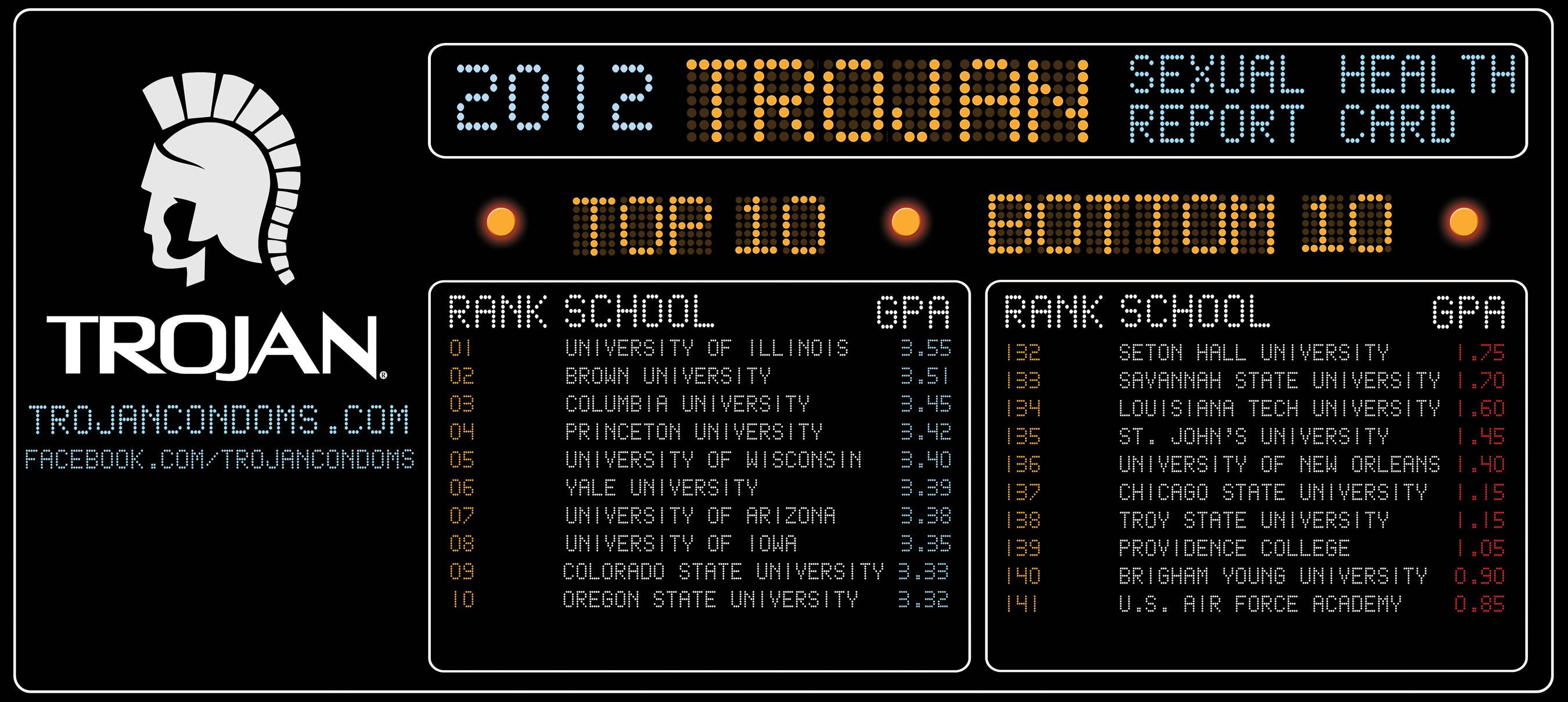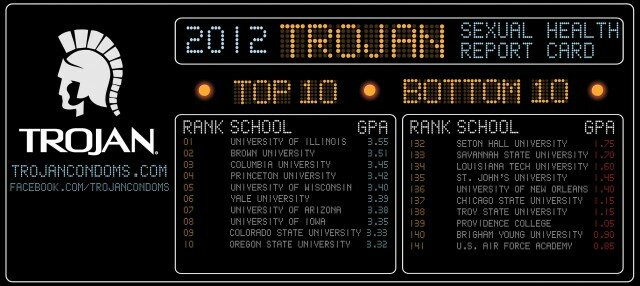The 7th annual Trojan Sexual Health Report Card is out, and the University of Washington has fallen in the rankings: 15 places from 2011, to 58th out of 141 schools. Look who’s #10! Oregon State. Number 7 is the University of Arizona, very popular with Washington students wanting to get away. You know who’s terrible at sex ed? The U.S. Air Force Academy. But then you knew that.
Now, to be sure, the survey is based on “the level of sexual health information and resources available to students on campus,” not what the students are up to, so don’t have a conniption, parents. This isn’t a referendum on that “hook-up” culture you’ve read about in your glossy magazines. In part, it’s based on the responses to a questionnaire that goes out to campuses; the UW’s feedback was provided by Mark Shaw, Director of Health Promotion.
Year to year, schools make substantial jumps one way or the other in Trojan’s report card, which made me curious about the methodology. After all, schools likely don’t revamp their entire sexual health strategy from one year to the next. I asked grader Bert Sperling (of Sperling’s Best Places) what accounted for the volatility: “Each year, we grade ‘on the curve’,” Sperling wrote back, “so a school’s resources may be the same as last year, but the school could be downgraded if we see an overall rise in the general level of excellence among all schools.”

So what’s the problem with the UW? The answer is fascinating if you’re into higher ed UX, and I know that you are. Here’s what Sperling found troubling–too many clicks to get to condoms (to paraphrase a bit)! And in Amazon’s backyard, too.
The problem seems to stem from the UW trying to force content into page templates, rather than asking themselves what would be the best way to present the information. Explains Sperling:
The major change in scores recorded for 2012 was for the web site of the UW Student Health Center (SHC), particularly the absence of a specific section for sexual health information and services. The site seems to be based on templates, which might make it difficult to customize the pages for specific information or have several groups of links on one page. Every piece of information requires passing through four or more pages of choices. (Home->Women’s Health->Services->Treatment of STIs->Where can I get testing?->County health clinic)
Ideally, a school’s SHC web site has a section on its home page labeled “Sexual Health”. This link goes to a page dedicated to all categories of sexual health issues, including contraception (male and female), HIV and STI tests, sexual harassment and assault resources, peer groups, events and programs, advice, blogs, etc.
Here are some examples:
· In the UW site, their “Condom Club” info is buried five clicks away from the home page, if the student knew to look under “Health Promotion” and “UHELP Presentations.” The issue is the same with peer-conducted events and programs, which are not found on the SHC site, only on their peer (UHELP) site.
· Information on STI testing is only found under “Women’s Health”
· Information on HIV testing is found under “Billing and Insurance”
· No information or discussion about sexual assault or harassment
· The questionnaire returned by UW noted there is a peer-supported program that answers students’ questions by email, but we can’t find any link to it.
Nice big photos, though!

